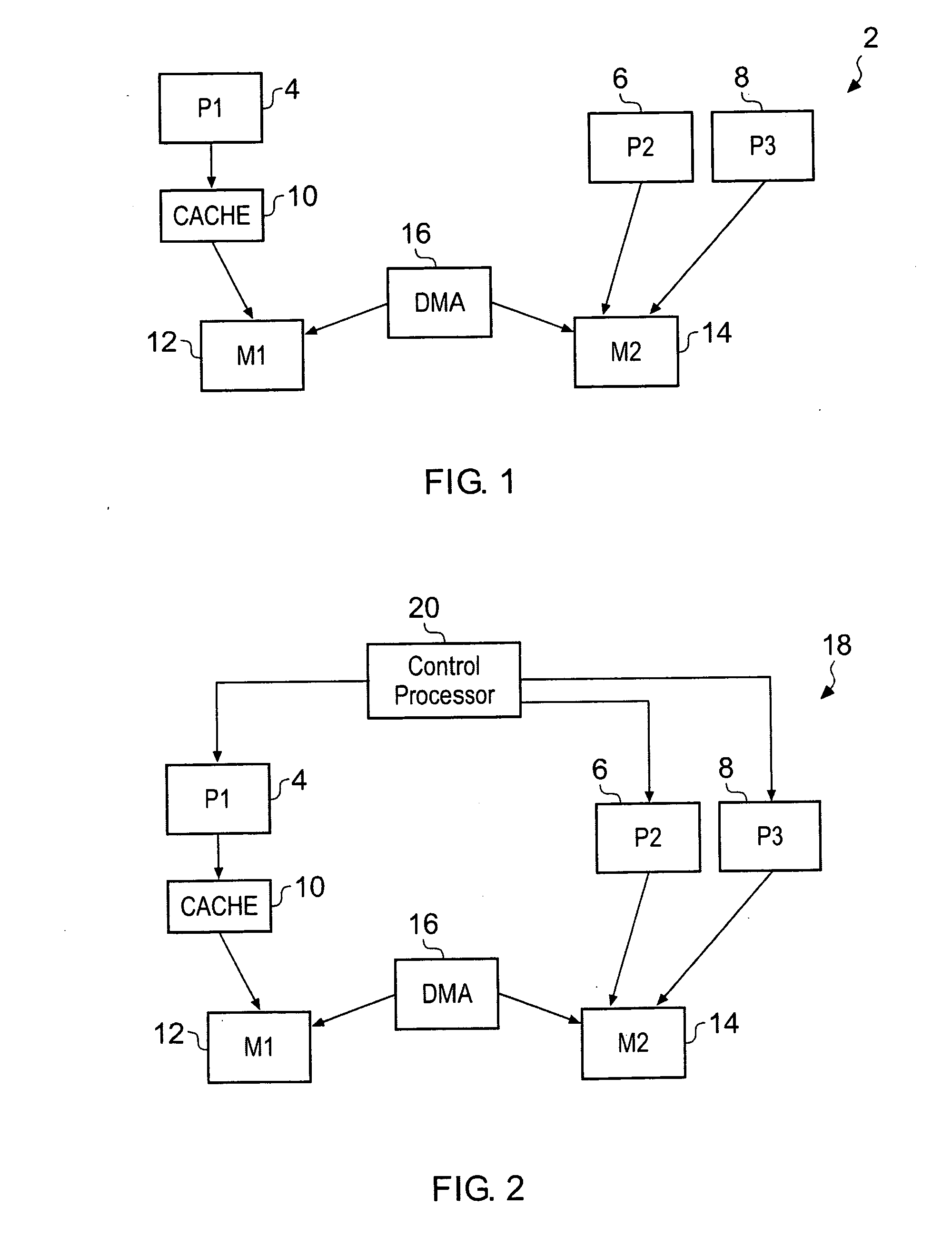Mapping a computer program to an asymmetric multiprocessing apparatus
a multiprocessing apparatus and computer program technology, applied in the field of data processing systems, can solve the problems of large hardware and power consumption overhead, inflexible approaches to work well with less uniform hardware, and lack of uniformity
- Summary
- Abstract
- Description
- Claims
- Application Information
AI Technical Summary
Benefits of technology
Problems solved by technology
Method used
Image
Examples
Embodiment Construction
[0064]FIG. 1 illustrates a first example asymmetric multiprocessing apparatus 2. The asymmetric multiprocessing apparatus 2 includes a plurality of execution mechanisms 4, 6, 8. These execution mechanisms may, for example, be selected from the group comprising a general purpose processor, a coprocessor, a VLIW processor, a direct memory access unit, a digital signal processor and a hardware accelerator unit. It will also be appreciated that other forms of execution mechanism may equally well be provided. Associated with the execution mechanism 4 is a cache memory 10. Above this in the memory hierarchy is a private memory 12. The private memory 12 is accessible by the execution mechanism 4, but is not directly accessible by either the execution mechanism 6 or the execution mechanism 8. The execution mechanism 6 and the execution mechanism 8 are connected to a shared memory 14. A direct memory access unit 16 is connected to both the private memory 12 and the shared memory 14. The dire...
PUM
 Login to View More
Login to View More Abstract
Description
Claims
Application Information
 Login to View More
Login to View More - R&D
- Intellectual Property
- Life Sciences
- Materials
- Tech Scout
- Unparalleled Data Quality
- Higher Quality Content
- 60% Fewer Hallucinations
Browse by: Latest US Patents, China's latest patents, Technical Efficacy Thesaurus, Application Domain, Technology Topic, Popular Technical Reports.
© 2025 PatSnap. All rights reserved.Legal|Privacy policy|Modern Slavery Act Transparency Statement|Sitemap|About US| Contact US: help@patsnap.com



